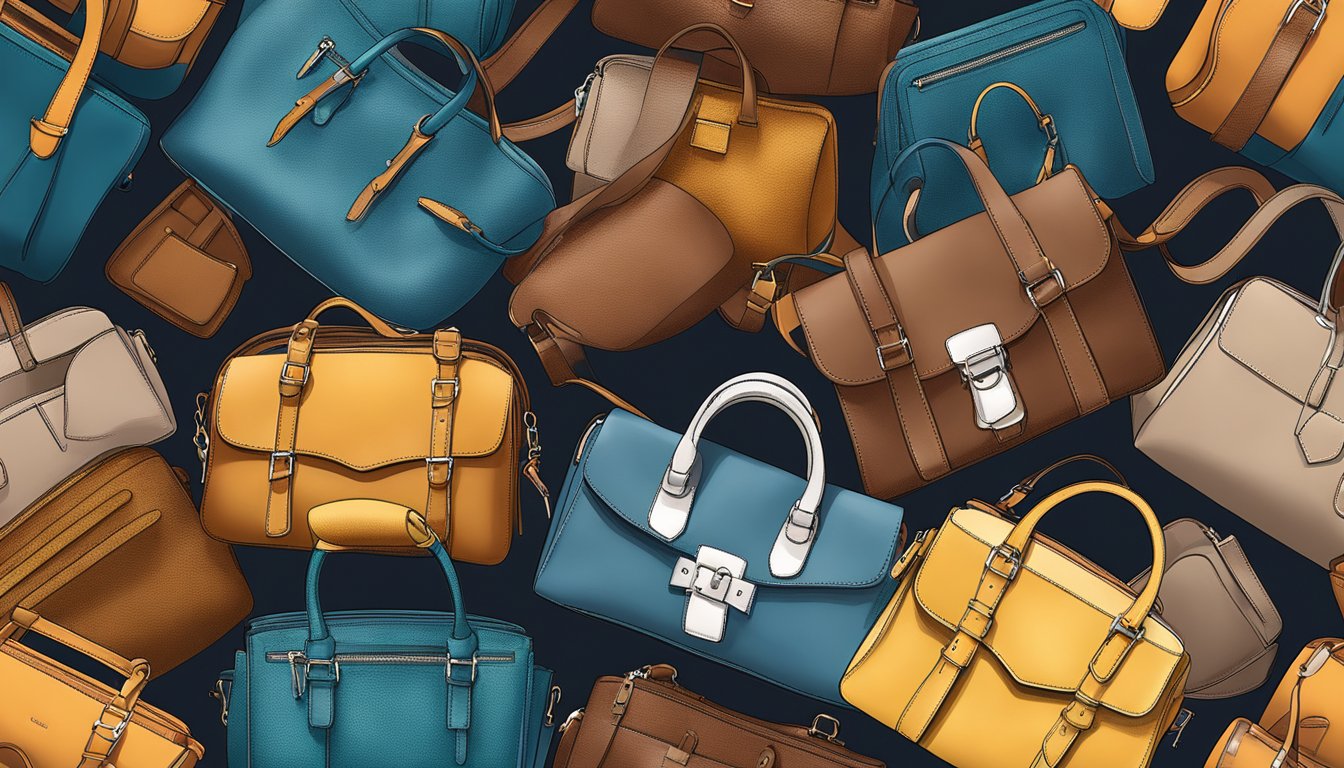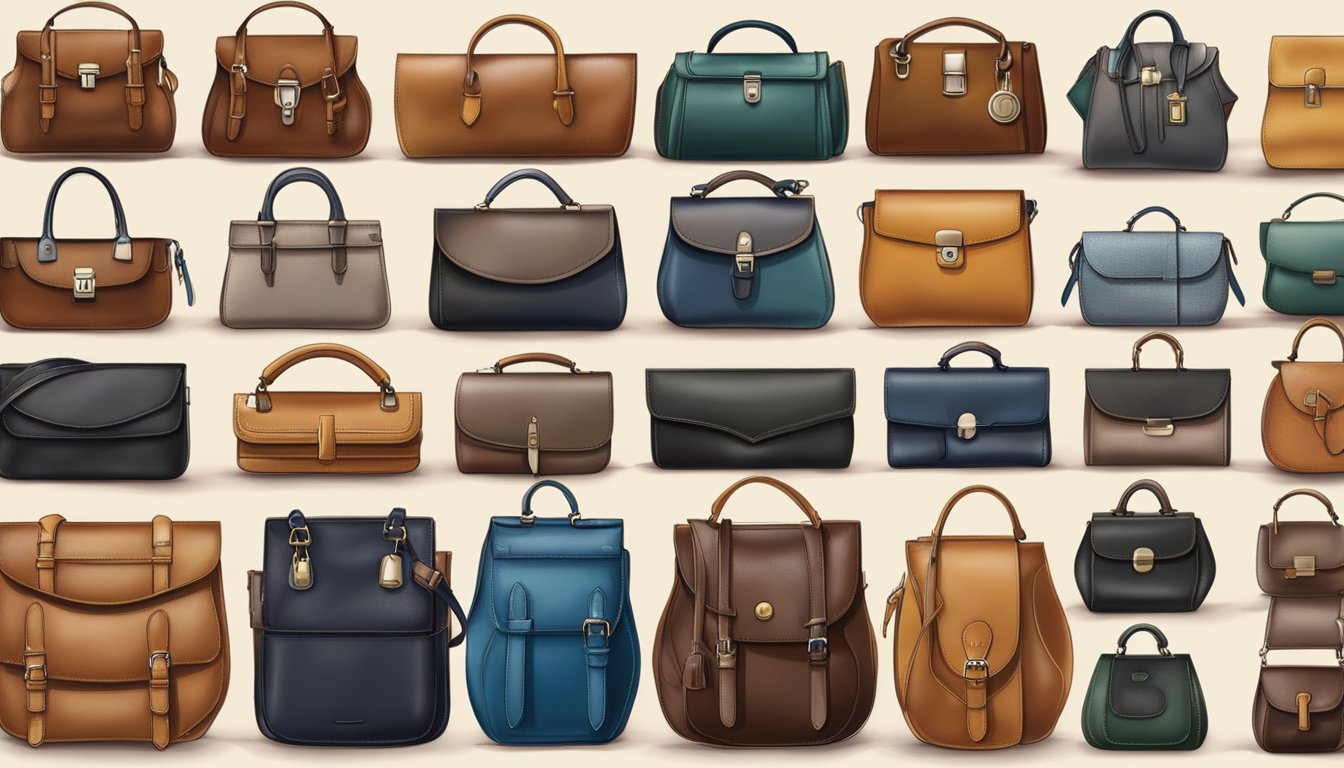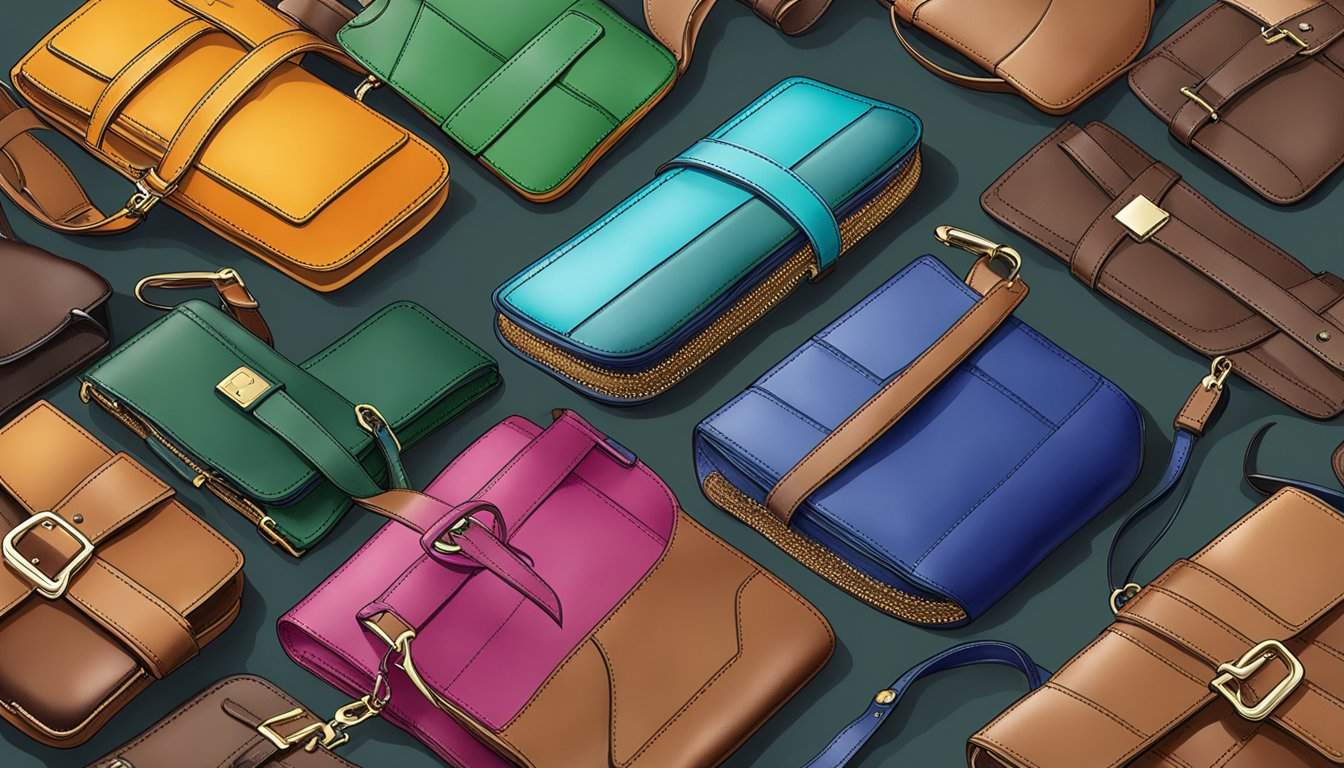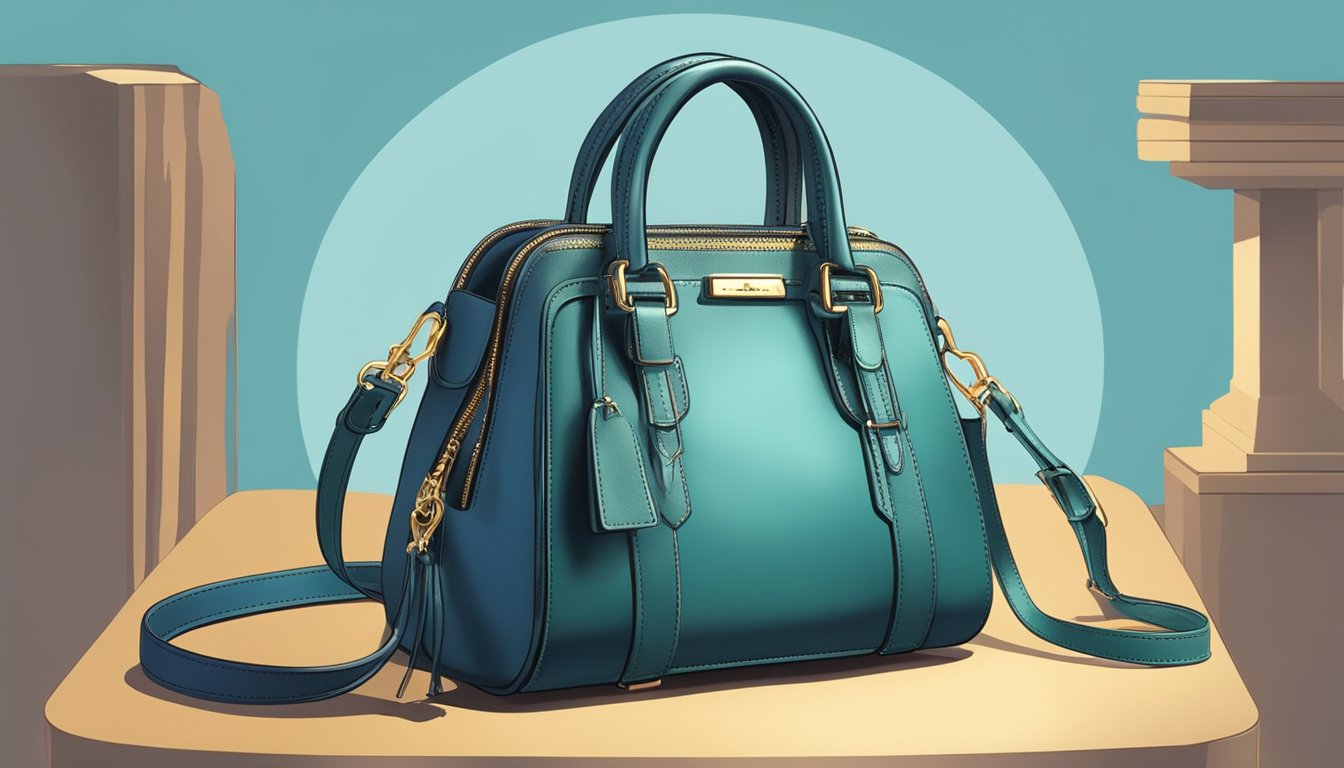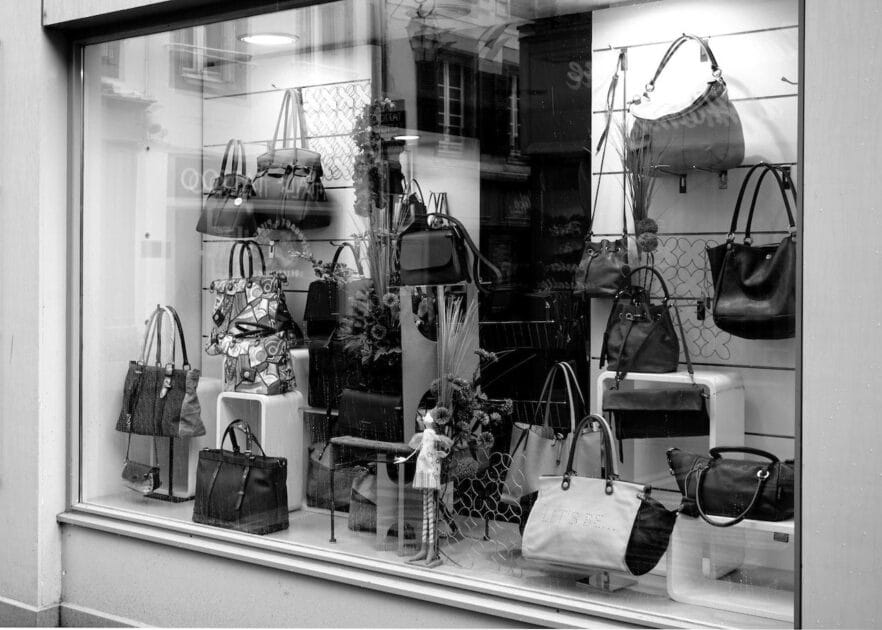If you’re someone who cares about the environment and animals, you may be looking for alternatives to leather purses. Leather is a popular material used in the fashion industry, but its production has a significant environmental impact. The tanning process uses toxic chemicals that can pollute waterways and harm workers. Additionally, the leather industry is responsible for the slaughter of millions of animals each year.
Fortunately, there are many leather substitutes available that are eco-friendly and animal-friendly. These materials are often made from natural and sustainable materials such as cork, mushrooms, and pineapple fibers. Not only are these materials better for the environment, but they can also be just as durable and stylish as leather.
Key Takeaways
- Leather production has a significant environmental impact and involves the slaughter of millions of animals each year.
- There are many eco-friendly and animal-friendly leather substitutes available, including materials made from cork, mushrooms, and pineapple fibers.
- These materials can be just as durable and stylish as leather while also being better for the environment.
Understanding Leather and Its Impact

https://www.youtube.com/watch?v=e7eVE-GhqNU&embed=true
When you think of a high-quality purse, you might immediately think of one made of leather. Leather is a popular material for purses because of its durability, flexibility, and timeless look. However, it’s important to understand the impact that leather production can have on the environment and animal welfare.
Most leather is made from cowhide, which is a by-product of the meat industry. While leather might seem like a sustainable choice because it uses a by-product, the tanning process can be incredibly harmful to the environment. Chrome tanning, which is the most popular method of tanning leather, uses dangerous chemicals that can pollute water sources and harm workers.
In addition to the environmental impact, the leather industry can also have a negative impact on animal welfare. Leather production often involves the use of dangerous chemicals, which can harm workers and nearby communities. It’s important to consider these factors when choosing a leather purse.
Fortunately, there are alternatives to animal leather that are more sustainable and ethical. One option is to choose a purse made from a plant-based material, such as cork or pineapple leather. These materials are often more eco-friendly than animal leather and don’t involve the use of dangerous chemicals.
Another option is to choose a purse made from recycled materials, such as plastic bottles or old car seats. These materials are often durable and can be made into a variety of styles and colors.
Overall, it’s important to understand the impact that leather production can have on the environment and animal welfare. By choosing a purse made from a sustainable and ethical material, you can feel good about your purchase and help reduce the impact of the fashion industry on the planet.
The Need for Leather Substitutes
https://www.youtube.com/watch?v=Sy1Q713LNCk&embed=true
If you’re looking for a new purse, you may want to consider a leather substitute. There are many reasons why people choose to use leather alternatives instead of traditional leather. One of the most pressing reasons is the environment. Leather production has a significant environmental impact. It requires a lot of water and energy to process animal hides into leather. Additionally, the chemicals used in the process can be harmful to the environment if not disposed of properly.
Another reason people choose leather substitutes is for animal welfare. Leather production involves the use of animal hides, which means that animals are often raised and killed for their skin. If you’re someone who cares about animal welfare, you might want to consider using a leather alternative.
Sustainable fashion is also becoming increasingly popular. Many people are looking for ways to reduce their carbon footprint and make more sustainable choices. Leather alternatives can be a great way to do this. Many leather substitutes are made from sustainable materials like cork or recycled rubber.
Finally, using a leather alternative can be a great way to be eco-friendly. Many leather substitutes are made from recycled materials or are biodegradable. This means that they won’t sit in a landfill for years after you’re done with them.
Overall, there are many reasons to consider using a leather substitute for your next purse. Whether you’re looking to be more eco-friendly, care about animal welfare, or want to make more sustainable fashion choices, there are plenty of options available to you.
Popular Leather Substitutes
If you’re looking for a cruelty-free and eco-friendly alternative to leather, there are many options available. Here are some of the most popular leather substitutes:
Vegan Leather
Also known as faux leather or synthetic leather, vegan leather is made from a variety of materials such as polyurethane (PU) and polyvinyl chloride (PVC). It looks and feels like real leather but is more affordable and doesn’t harm animals. However, it is not biodegradable and can release harmful chemicals during production.
Plant-Based Leathers
Plant-based leathers are made from natural materials such as cork, pineapple, apple, mushroom, cactus, and coconut. These materials are renewable, biodegradable, and do not harm animals. Cork is water-resistant and can be used for insulation, while pineapple leather (Piñatex) is known for its durability and softness. Apple leather is made from apple waste and has a unique texture, while mushroom leather (MycoWorks) is strong and flexible. Cactus leather (Desserto) is also durable and has a unique texture, while coconut leather (Malai) is lightweight and breathable.
Mylo
Mylo is a new leather substitute made from mycelium, the underground root structure of mushrooms. It looks and feels like real leather but is more sustainable and doesn’t harm animals. It is also biodegradable and can be produced without harmful chemicals.
Overall, there are many leather substitutes available that are eco-friendly and cruelty-free. Consider your needs and preferences when choosing a leather substitute for your purse.
Emerging Innovations in Leather Substitutes
« Is a Red Purse a Good Idea? Pros and Cons to Consider
Is Handbag the Same as Purse? Understanding the Differences »
https://www.youtube.com/watch?v=RFVknhnbG-U&embed=true
If you’re someone who is concerned about animal welfare or the environmental impact of the fashion industry, you’ll be happy to know that there are now several emerging innovations in leather substitutes that are gaining popularity. Here are some of the most exciting developments:
Lab-Grown Leather
One of the most promising leather substitutes is lab-grown leather. This is a type of leather that is grown in a lab using a combination of biotechnology and synthetic biology. Companies like Modern Meadow are leading the way in this field, and they have already developed a type of lab-grown leather that is virtually indistinguishable from traditional leather in terms of look and feel.
Mycelium Leather
Another exciting development in the world of leather substitutes is mycelium leather. Mycelium is the vegetative part of a fungus, and it can be grown into a leather-like material that is both sustainable and biodegradable. Companies like MycoWorks are already producing mycelium leather products, and they are quickly gaining popularity among eco-conscious consumers.
Muskin Leather
Muskin leather is a unique type of leather substitute that is made from mushroom caps. It has a texture and appearance that is similar to suede, and it is completely biodegradable. Muskin leather is produced by extracting the fibers from the mushroom caps and then processing them into a leather-like material. It is a sustainable and eco-friendly alternative to traditional leather.
Tree Bark Leather
Tree bark leather is another promising leather substitute that is made from the bark of trees. The bark is processed and treated to create a material that is similar to leather in terms of texture and appearance. This type of leather substitute is completely biodegradable and sustainable, and it is gaining popularity among environmentally conscious consumers.
Overall, these emerging innovations in leather substitutes offer a sustainable and ethical alternative to traditional leather. Whether you’re looking for a lab-grown leather purse or a mycelium leather wallet, there are now plenty of options available to you. By choosing a leather substitute, you can help reduce your environmental impact and support companies that are committed to animal welfare.
Comparing Quality and Durability
https://www.youtube.com/watch?v=SEfR0csz3jk&embed=true
When it comes to choosing a leather substitute for purses, you want to ensure that it is of high quality and can withstand daily wear and tear. Here are some factors to consider when comparing the quality and durability of different materials:
Durability
One of the most important factors to consider when choosing a leather substitute is its durability. You want a material that can withstand daily use and last for years to come. Some materials, like cork leather, are known for their durability and resistance to wear and tear. Others, like nylon, may not be as durable and may start to show signs of wear after only a few months of use.
Quality
The quality of the material you choose is also important. You want a material that looks and feels like real leather, but without the environmental impact and ethical concerns. Some materials, like top-grain leather and vegan leather, are known for their high quality and luxurious feel. Others, like bonded leather, may not be as high quality and may start to peel or crack over time.
Waterproof
If you live in a rainy climate or plan on using your purse near water, you may want to consider a material that is waterproof. Some materials, like cork leather and nylon, are naturally waterproof and will keep your belongings dry even in the rain. Others, like vegan leather, may not be as waterproof and may require additional treatment to make them water-resistant.
Smooth
Another factor to consider when choosing a leather substitute is the smoothness of the material. You want a material that feels comfortable to the touch and won’t scratch or irritate your skin. Some materials, like top-grain leather and cork leather, are known for their ultra-smooth texture. Others, like nylon and vegan leather, may feel scratchy or rough to the touch.
Overall, when comparing different leather substitutes for purses, it’s important to consider factors like durability, quality, waterproofness, and smoothness. By taking these factors into account, you can choose a material that will meet your needs and last for years to come.
Environmental Impact of Leather Substitutes
https://www.youtube.com/watch?v=Arq3gkJD1f8&embed=true
If you are looking for a leather substitute for your purse, you may be wondering about the environmental impact of your options. Fortunately, there are many sustainable leather alternatives available that can help reduce the environmental impact of your purse.
One popular option is recycled rubber, which is made from discarded tires. This material is durable and water-resistant, making it a great choice for a purse. Plus, using recycled rubber helps reduce waste and pollution.
Another eco-friendly option is natural materials, such as large leaves or cork. These materials are biodegradable and compostable, which means they won’t contribute to landfill waste. Additionally, cork is a renewable resource that can be harvested without harming the tree.
If you are looking for a completely biodegradable option, consider a material like Piñatex. This sustainable leather alternative is made from pineapple leaves, which are a byproduct of the pineapple industry. Piñatex is not only biodegradable, but it also helps support small-scale farmers in the Philippines.
It’s also important to consider the recyclability of your purse material. Some leather substitutes, like plastic-based materials, may not be recyclable and can contribute to pollution. On the other hand, many sustainable leather alternatives are recyclable, which helps reduce waste and support a circular economy.
Overall, there are many sustainable leather alternatives available that can help reduce the environmental impact of your purse. By choosing a material that is recycled, biodegradable, compostable, or recyclable, you can make a positive impact on the planet while still enjoying a stylish and functional accessory.
Leather Substitutes in Fashion Industry
As more and more people become aware of the environmental impact of animal leather, the fashion industry has been looking for alternatives. Thankfully, there are now several leather substitutes available that are not only eco-friendly but also stylish and durable.
One of the most popular leather substitutes is made from pineapple leaves. Piñatex, a company committed to material research and innovation, produces this vegetable leather. It has been used by several fashion brands, including H&M and Hugo Boss, to create purses, handbags, and wallets.
Another promising leather substitute is mushroom leather. Ecovative, a New York-based material innovation company, is one of the pioneers in this field. Its mycelium-based leather is grown in vertical, indoor farms in a matter of days, making it a much more efficient alternative to traditional leather. Several fashion brands, including Stella McCartney, have already used this material to create their products.
Waxed canvas is also a popular alternative to leather. It is durable, waterproof, and can be used to create backpacks, sneakers, and other accessories. Canvas is usually made from cotton, which has significant environmental impacts, but it is still a better choice than leather. If the cotton is organic, it might also be a better option than conventional cotton.
Nae, a Portuguese footwear brand, uses recycled materials to create its shoes, including recycled PET bottles, cork, and microfiber. Marc Jacobs has also used recycled materials to create its eco-friendly handbags, including recycled polyester and nylon.
In conclusion, the fashion industry is making strides in finding eco-friendly alternatives to animal leather. Several materials, including pineapple leaves, mycelium, waxed canvas, and recycled materials, are being used to create stylish and durable purses, handbags, wallets, sneakers, and backpacks. By choosing these alternatives, you can help reduce the environmental impact of the fashion industry while still looking fashionable and trendy.
Market Trends and Consumer Preferences
As consumers become more conscious about the impact of their purchases on the environment and animals, the demand for vegan and cruelty-free leather alternatives has been on the rise. According to Mordor Intelligence, the leather goods market size is expected to grow from USD 292.23 billion in 2023 to USD 360.70 billion by 2028, at a CAGR of 4.30% during the forecast period (2023-2028). This growth is expected to be driven by the increased use of leather in the clothing industry due to its durable nature and premium appearance.
However, there has been a growing trend towards sustainable fashion, which has led to an increase in the popularity of alternative materials such as cork, pineapple leaves, and recycled plastic. These materials are not only eco-friendly but also provide a unique and stylish look to purses and other accessories.
Imitation leather, also known as faux leather, has been a popular alternative to genuine leather for many years. It is made from synthetic materials such as polyurethane and is often more affordable than real leather. However, it has been criticized for its environmental impact as it is not biodegradable and can release harmful chemicals during production.
As a result, many consumers are turning to more sustainable and eco-friendly alternatives such as cork leather, mushroom leather, and apple leather. These materials are made from natural and renewable sources and are biodegradable, making them a more environmentally friendly option.
In summary, the leather substitute market is growing, and consumers are becoming more conscious about the impact of their purchases on the environment and animals. As a result, there has been an increase in demand for vegan, cruelty-free, and sustainable alternatives to traditional leather.
How to Care for Leather Substitutes
Taking care of your leather substitute purse is essential to ensure it lasts as long as possible. Here are some tips on how to care for your leather substitute purse:
Regular Cleaning
Regularly cleaning your leather substitute purse is essential to keep it looking its best. You can use a damp cloth to wipe down the surface of your purse. If there are any stains, you can use a mild soap solution to clean them off. Be sure to rinse the soap off thoroughly and allow the purse to air dry.
Avoid Harsh Chemicals
Avoid using harsh chemicals on your leather substitute purse as they can damage the material. Instead, opt for non-toxic cleaning solutions that are safe for the environment and your health. You can also use natural leather cleaners that are specifically designed for leather substitutes.
Store Properly
When you’re not using your leather substitute purse, be sure to store it in a cool, dry place. Avoid exposing it to direct sunlight or heat, as this can cause the material to fade or crack. You can also use a dust bag to protect your purse from dust and dirt.
Avoid Overloading
Avoid overloading your leather substitute purse with heavy items, as this can cause the material to stretch and lose its shape. Instead, only carry the essentials and distribute the weight evenly.
Moisturize
Leather substitutes can dry out over time, so it’s important to moisturize them regularly. You can use a leather conditioner to keep the material soft and supple. Be sure to apply the conditioner evenly and allow it to absorb into the material before wiping off any excess.
By following these tips, you can keep your leather substitute purse looking great for years to come.
Conclusion
When it comes to choosing a leather substitute for your purse, there are many options available. From paper to pineapple leather, each alternative has its own unique set of benefits and drawbacks.
If you’re looking for a sustainable option, there are several eco-friendly materials to consider. For example, pineapple leather is made from the leaves of the fruit, making it a renewable resource. Additionally, materials such as cork and mushroom leather are also sustainable options that are gaining popularity in the fashion industry.
It’s also important to consider the environmental impact of the production process. Some leather substitutes, such as PVC, have a negative impact on the environment due to the toxic byproducts produced during manufacturing. Opting for materials that are produced using low-impact processes can help reduce your carbon footprint and make your purse more environmentally friendly.
Ultimately, the choice of a leather substitute for your purse will depend on your personal preferences, budget, and values. By considering sustainable and eco-friendly options, you can make a choice that is both friendly to the environment and stylish.
Frequently Asked Questions
https://www.youtube.com/watch?v=oO4aGbAwtpo&embed=true
What are the benefits of using leather alternatives?
There are several benefits to using leather alternatives. Firstly, they are often more affordable than real leather, which makes them accessible to a wider range of people. Additionally, many leather alternatives are more environmentally friendly than real leather. They can be made from recycled materials or from materials that are less harmful to the environment than traditional leather. Finally, leather alternatives can be more versatile than real leather. They can be made in a wider range of colors and textures, which can be useful for people who want a more unique look.
What is Mylo leather?
Mylo leather is a type of leather alternative that is made from mushroom roots. It is a sustainable and eco-friendly material that has a texture and appearance similar to real leather. Mylo leather is also biodegradable, which means that it will break down naturally over time.
What is the best alternative to real leather?
The best alternative to real leather depends on your individual needs and preferences. Some popular alternatives include cork, pineapple leather, and apple leather. Cork is a sustainable material that is lightweight and water-resistant. Pineapple leather is made from pineapple leaves and is a durable and eco-friendly material. Apple leather is made from apple waste and is a soft and supple material that is similar in texture to real leather.
What are non-leather handbags made of?
Non-leather handbags can be made from a variety of materials, including synthetic materials like PVC, nylon, and polyester. They can also be made from natural materials like cotton, canvas, and hemp. Some non-leather handbags are also made from recycled materials like plastic bottles or rubber.
What are some eco-friendly leather suppliers?
There are several eco-friendly leather suppliers that offer sustainable and environmentally friendly leather alternatives. Some popular options include Piñatex, which makes leather from pineapple leaves, and Ananas Anam, which makes leather from pineapple waste. Other suppliers include Mycoworks, which makes leather from mushrooms, and Modern Meadow, which makes leather from lab-grown animal cells.
What are some luxury vegan handbags?
There are several luxury vegan handbag brands that offer high-quality and stylish alternatives to traditional leather. Some popular options include Stella McCartney, which offers a range of vegan leather handbags, and Matt & Nat, which makes handbags from recycled materials. Other brands include Gunas, which makes luxury vegan handbags from sustainable materials, and JW Pei, which makes handbags from vegan leather and recycled plastic bottles.





